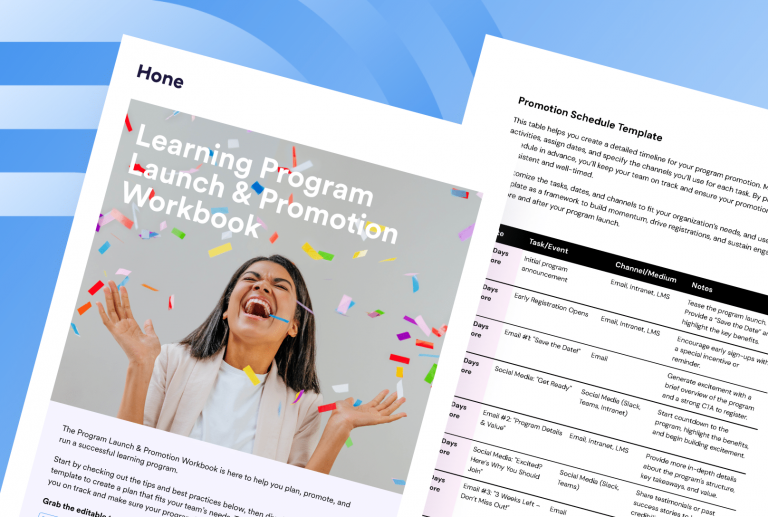What is an Interview?
The definition of an interview refers to a structured conversation that usually involves questions or an oral examination. The job interviewing process evaluates a prospective employee’s qualifications for a specific position.
Some organizations set up a series of interviews for specific jobs. The first interview may be a short screening meeting with a recruiter. Then, the company may arrange more in-depth interviews. Subsequent conferences involve personnel who can ultimately hire the applicant.
Interviews involve a conversation between two or more parties. The traditionally two-person interview permits direct questions and follow-ups. An interviewer can gauge the accuracy and relevance of the interviewee’s responses. Thus, the interviewer can ask subsequent questions to clarify earlier answers.
What are Common Workplace Interview Strategies?
One of the roles of the recruitment funnel is attracting and hiring diverse talent who improve the organization. Interviews allow employers to determine the best hire for a position. These meetings also help managers assess if an individual would fit the company’s culture well.
Job vacancies and the hiring process can be expensive for organizations. Interviews fill positions to stop productivity losses. Additionally, they screen for top talents that improve business and increase profits.
Interviews can take place in person, by phone, or through videoconferencing. Face-to-face interviews help both parties to interact and understand each other. Therefore, the parties can form a connection, making sessions more enjoyable.
These meetings may also be:
- A one-on-one with a single interviewer and interviewee.
- A group interview with several candidates.
- A panel interview with multiple representatives from the organization.
- A computer-assisted interview where the candidate responds to closed-ended questions.
Employers may ask behavioral, competency-based, and situational questions. The nature of questions often depends on the industry or job.
For instance, software companies ask competency-based questions of programmers. And job seekers may need to answer behavioral questions for customer service positions. Managerial candidates can provide insight into their leadership methods with situational questions.
Unstructured Interviews
Unstructured or non-directive interviews are open-ended conversations without a predetermined plan or questions. They are informal and free-flowing, like everyday conversations.
Nevertheless, the interviewer consciously guides the conversation to stay on topic. This interview type permits spontaneity and the development of questions based on the interviewees’ responses. In some cases, interviewers may prepare questions about the topic in advance.
Structured Interviews
Interviews can also be highly structured, with specific questions in a specified order. Questions focus on the experience and skill set needed for the open position. Interviewers ask each candidate the same structured interview questions in the very same order.
A standardized interview process helps organizations assess candidates more efficiently and effectively. For instance, interviewers may compare candidates on a numeric scale. This format provides clarity and streamlines the candidate comparison process.
Strong Interviewing Skills for Interviewers
Interviewing is a crucial part of the recruiting process. Good interviewers are prepared, ask the right questions, and adequately evaluate candidates. The following are some of the top interviewer skills for an efficient interview process:
- Prepared – Interviewers should review candidates’ resumes and prepare their questions.
- Have active listening skills – Interviewers should listen closely to the candidate to understand their point.
- High emotional intelligence – This trait helps interviewers make the best judgment about a candidate.
- Friendly – Being personable helps put job candidates at ease.
- Have conversational skills – Relaxed and engaged job seekers more freely express information.
Although not a skill, interviewers should be knowledgeable about the position for which they are interviewing. They should know what skills and qualities are essential to do the job. HR personnel can speak to team leaders and members about valuable abilities to keep in mind.
9 Hiring-Manager Interview Tips
Companies can increase hiring success by using effective interviewing techniques. The interview process must yield the best candidates possible. Top talent may slip through the recruitment funnel if the organization has a poorly planned and executed strategy.
1. Select the Most-Appropriate Interviewer
A Human Resource (HR) representative usually has interview experience and training. They can be a good interviewer for a first meeting. However, the manager of the new hire can better select a fitting candidate.
Fortunately, HR can reduce the time supervisors need in the interview process. The manager and interviewer can discuss relevant topics and skills in advance. Or, other team members can talk with candidates.
A supervisor’s and team members’ feedback can benefit remote or unique environments. Parties may have opinions on things to look out for when managing hybrid teams.
2. Have a Way to Record the Candidates’ Answers
Even the best interviewer is human and subject to their memories. Interviewers should take notes during the meeting or have a recording method. They may need to remember details or clarify answers amongst multiple job seekers.
With two interviewers, one person can ask questions while the other writes the answers. Alternatively, the interviewers can take turns asking and recording.
3. Plan Questions in Advance
Interviewers who prepare questions beforehand can ensure they get the information they need. In addition, a prepared agenda keeps the meeting moving quickly. It also decreases the chance of vague or awkwardly worded questions.
An effective interview question:
- Comes from a place of genuine curiosity.
- Sparks honest answers that are meant to be simple.
- Has a specific intention.
4. Avoid Generic Questions
Many job seekers rehearse responses to commonplace questions. Instead, ask unexpected questions to see how applicants think on their feet. Improv is a good indicator of how they’ll deal with day-to-day challenges.
Three Inquiries to Ask:
- Tell me about a time you faced a roadblock and how you got around it.
- Give me an example of when you needed to learn a new skill.
- Describe your method for handling conflict with a coworker.
Three Questions to Avoid:
- Where do you want to be in five years?
- What are your strengths and weaknesses?
- Why are you leaving your present position?
Additionally, the interviewer should avoid questions protected by law, such as those that open a company up to discrimination lawsuits.
5. Ask Questions to Get Practical Information
Ask the questions that elicit the needed information. Scenario-based questions reveal how candidates would react to a typical on-the-job challenge. Questions should focus on measurable outcomes. For example, how do you motivate someone who isn’t doing their job?
Additionally, request information about their pertinent accomplishments. This is also a way to engage candidates on a personal level.
6. Talk Less, Listen, and Pay Attention More
Interviewers can make applicants comfortable by asking a few general questions. But they should let the candidate do most of the talking. While the interviewee is responding, watch for nonverbal behaviors, such as:
- Making eye contact.
- Sitting up straight.
- Proxemics or personal space.
- Facial expressions and body language.
Moreover, save information about the organization’s brand and culture for the end of the meeting. Candidates may repeat what they hear rather than be candid.
7. Talk About the Company’s Brand and Culture
A company brand is an element to help sell the candidate. It reflects the functional benefits offered, such as:
- Compensation.
- Flexible work arrangements.
- Growth opportunities and career development.
- Health plans.
- Wellness and telecommuting programs.
Furthermore, talk about the company’s emotional benefits. Speak about your company’s culture, employee-generated initiatives, and community volunteer programs.
Sharing second-hand anecdotes is one way to express why the organization is a great workplace. But instead, consider having employee advocates meet the candidate and share their positive work experience first-hand.
8. Organize the Timetable
Interviewers should know how long the meeting will last. Likewise, they should estimate how much time will be for questioning and giving an overview of the position. Consider the following example of a 30-minute interview:
- Welcome and describe approach – 2 minutes
- Interview questions – 23 minutes
- Candidate’s questions – 4 minutes
- Wrap-up – 1 minute
9. Consider a Second Interview
Strong candidates should meet with other team members and supervisors. Second meetings can reinforce an interviewer’s belief about the best candidate. Interviewers should ask new questions and repeat a few to test consistency.











